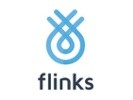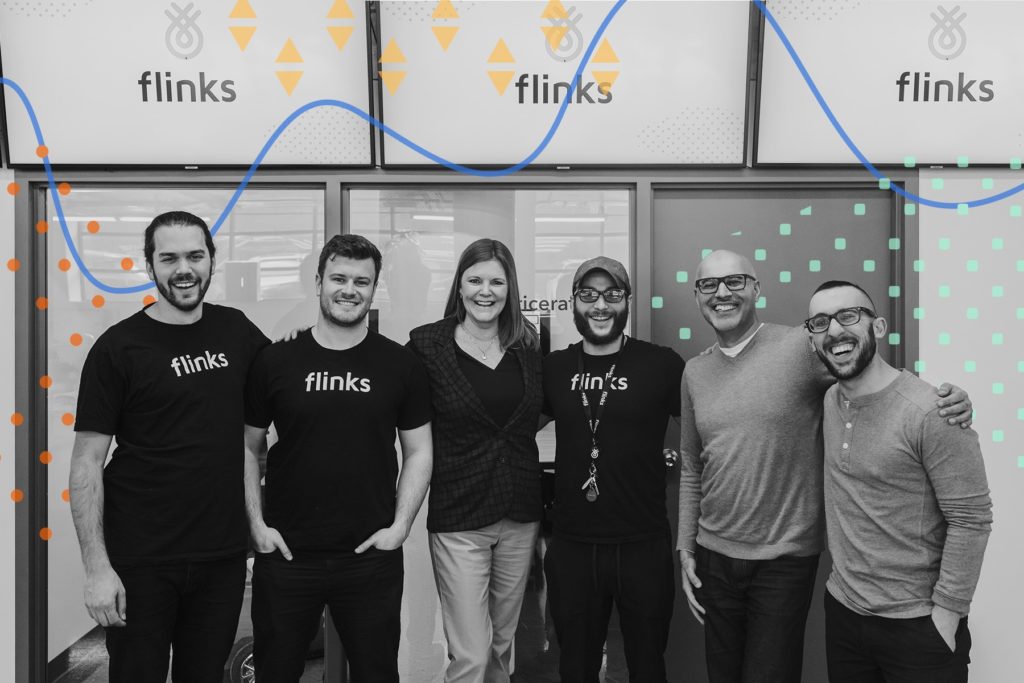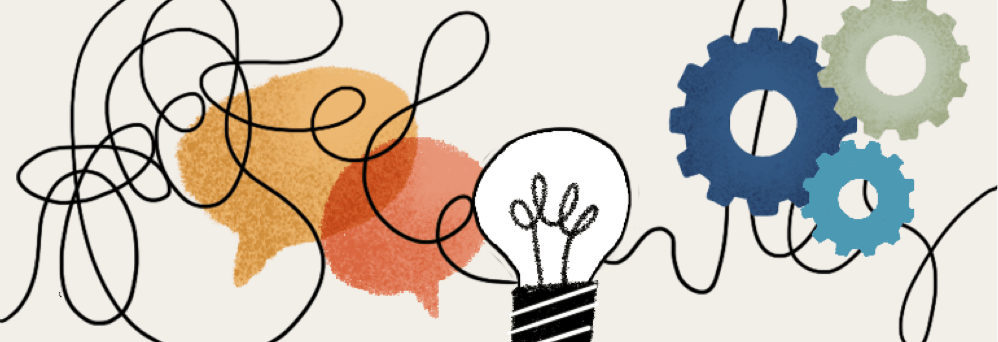
Flinks gives you the power to build the future of finance. Connect, enrich and utilize financial data to delight your customers with amazing products.
Equifax Canada’s Lisa Nelson on Driving Relevant Innovation as a 100-Year-Old Institution
The road to open banking is not straight nor is it always clear. Actually, most of it is still uncharted territory. Along the way, visionaries, builders and enablers lead the change in the finance and banking industry.
We wanted to sit down and talk with them so we launched a podcast — Connect.
This is episode 2, where we talk with Equifax Canada’s President, Lisa Nelson, on how a centenarian institution can drive relevant innovation, create an ecosystem of trust, and help people live their financial best.
Connect brings you deep dives into the world and mindset of innovators. If you liked this conversation and don’t want to miss on future episodes, catch us on Apple Podcasts and Google Podcasts, stream us on Spotify, or subscribe on your favorite podcast app.
No time? No worries! Read our 4 key takeaways from the conversation
- It’s not about what you are, it’s about what you do
Really successful companies know exactly what they’re in the business of doing. This understanding allows them to focus innovation on solving real-life problems. While Equifax Canada is mostly B2B company, what it’s really doing is empowering consumers by filling the data gaps that would otherwise prevent them to access the services they need.
- Data is not enough — meaningful data matters
In the era of business intelligence, access to data isn’t enough. Data needs to be made meaningful. New types of data and analytics tools can enrich a consumer credit profile, authenticate a person’s identity and reduce fraud in real-time — helping businesses answer the questions that block them from making the right decisions and moving forward with their clients.
- The future of credit is bright(er) for underserved populations
Accessing credit can be hard or even downright impossible if you’re a newcomer to Canada with only a checking account, a young person with a thin credit file, or if you’re on your way to rebuild your credit score. Currently underserved populations will see better access to credit and services catered to their needs thanks to new ways of scoring, such as analytics based on transactional data.
- The value of open banking? “As the consumer, you own it and you control it”
According to Lisa, open banking must be based on consumers’ consent to share their data with trusted businesses, and have benefits that drive them to engage. So, basically, consumers owning their data gives them control over where it goes and how it’s used. In a market-driven open banking space, businesses wishing to use data will need consumers to choose to opt in.
Below is an edited transcript of our conversation.


100 years young
Adam: Equifax has been for a long time one of the cornerstones for the modern credit system and, by extension, the financial services ecosystem and the economy as a whole. Today we’re here with Equifax Canada’s president, Lisa Nelson, to discuss how her organization tackles the impacts of new technologies in the financial services sector. Specifically, we’re really eager to hear about Equifax’s approach to innovation, chat about Lisa’s perspective on the state of our industry, and get a sneak peak on how they’re working to enable their clients to get and stay ahead of the curve.
Lisa, welcome to the show.
Lisa: Thanks, Adam.
Adam: Most Canadians are familiar with the name Equifax. They more or less understand their credit score and everything else, but that’s just the tip of the iceberg. Would you mind just first explain your business and help people understand what you do and really what that role is in the lives of average consumers?
Lisa: The purpose for Equifax even existing is helping people live their financial best. And when you think about that, you think about all the various events in our lives that include information about our financial lives — renting my first apartment, buying a home, buying a car, leasing a car. There are life events every day that the credit industry is enabling to make smoother and less costly for every one of us as a consumer. Equifax’s role is to work within that ecosystem, serving consumers and our business customers to make that process efficient and fair.
When you look at the Equifax business in Canada, a lot of people think about “my credit report” or “my credit report and my score”. And that’s true. We serve the vast majority of Canadian lenders. We also provide services to the telecommunications industry. We provide insights to the government. We’re very deep in the automotive space and the mortgage space. So, all of these life events not only impact the consumer but impact the businesses serving that consumer.
Adam: Where do you see the unique thing that Equifax provides to really enable those things moving forward?
Lisa: Part of it is just simply our presence in the Canadian economy and the fact that we serve well over two-thirds of the needs of that standard credit insight being sought after by businesses. In addition to that, a very unique component of what Equifax brings to the table is the fight against fraud And so when I look at our business just last year, it grew nearly 20% in the fraud space. And when we talk about fraud, we’re talking about authenticating a consumer’s identity. We’re also talking about with a large consortium of lenders and other industry players where there’s known fraud, to be able to pull that data together and share those fraudulent identities to help fight fraud. Those are a couple of areas where we’re playing.
A newer space that we’re working in is income and employment verification, working with employers to gather income and employment data that we can then provide to those that want to verify income and employment with the expressed consent of the consumer. When we work to enable consumers, we’re talking about empowering consumers, giving them more control over what’s being accessed and why. So that’s definitely a path that we’re on that we intend to become stronger with especially in our work with all of you here at Flinks.
Adam: Looking back on everything you did — you mentioned the fraud products and everything else — what’s something that really excites, really makes you proud?
Lisa: I would say what makes me most proud over the last couple of years is really working to transform our company to be sure we’re thinking about that customer first. And if you put the customer at the center of everything we do and we know that our customers exist to serve their customers or the consumer, what we’ve been able to accomplish is some really nice growth. Almost triple our historic growth rates because we’re focused on the needs of our customers and their customers. That has translated into, as I mentioned, stronger fraud performance. It’s also translated into new product innovation.
We manage our business by measuring innovation. We focus on what are the new ideas we’re bringing forth to our customers, those new insights that help them win in their business. And so we measure that innovation called our Vitality index by what percentage of our revenue is derived from solutions that are less than 3 years old. And that’s a real strong motivator for our team to make sure we’re constantly thinking about what our customers need next.
Adam: I was looking up this morning. I didn’t realize that Equifax was founded in 1899 which is insane. Outside of banks, there’s very, very few companies that are still active and relevant today that have that kind of history behind them. The idea that you can take a company that’s that level of experience behind it, and actually you can see that they’re still focused on putting out new products and making sure that things that were made in the last 3 years, are making 10% of revenue. It’s a pretty crazy metric.
Lisa: It is. And, in Canada itself, we’re celebrating our 100th-year anniversary this year. Our theme is “Cheers to 100 Years.” And, we’re looking forward to the next 100 years, because we intend to be relevant every step of the way.

Adam: You mentioned customer centricity; that’s a huge part of our business and obviously of yours as well. What are some common challenges that you’re learning from your customers that are problems that you’re trying to address with them together?
Lisa: A big theme that I’m hearing from our customers is “help me move faster and be more relevant on this digital journey”. It’s interesting when you dive a little deeper into that comment. Digital journey has a lot of similarities across customers and across industries. But for every customer, it’s got its own flavor. It’s got its own unique interest. But that definitely is a big one. So, understanding how we can be helpful in the digital journey, understanding how we can help our customers be more relevant to the consumers that are new to Canada, to the young adults, to the small business, those are all segments that virtually every industry that we’re working with is trying to figure out how to do better by. And so those are some key areas of focus for us.
Adam: Are there any people or companies that you look up to personally within the Canadian financial landscape? That you think have a great handle of this?
Lisa: Flinks, man.
Adam: Other than Flinks. That’s the obvious one.
Lisa: No. Truly I love the innovation and the spirit in this office and throughout your employees. But really, there are too many to name. You know, I’ve gotten to have close personal business relationships with executives; same thing at some of the largest telco companies and also some of the really interesting startup companies. There isn’t one individual that I could name, but collectively we should be so proud as Canadians to see how we’re showing up in the larger, global framework of innovation.
Open banking: “As the consumer, you own it and you control it”
Adam: That’s actually a really good segue into our next topic. One of the things that we’re really passionate about
Lisa: That’s a great question for me because I love talking plain. If I were talking to my mom or, you know, someone in high school that maybe doesn’t have a lot of experience with all of this, the first thing I would explain about open banking is that you as the consumer, you own it and you control it. So open banking doesn’t happen out here without my permission. If I’m the consumer, I’m choosing to work with a company I trust and give them permission to look at my transactional data in my bank account for some benefit to me. At its core, open banking needs to have consumer benefit that attracts them to want to engage.
If I do engage, maybe I’m engaging because I’m brand new to Canada and all I have is a checking account. So I don’t have enough credit history to warrant me getting a credit card, but if I can open up my transactional data, permitting that company to look at it to see that I’m regularly depositing payroll checks, that I’m being prudent with how I spend my money, if that’s enough insight to cause a lender to have the trust in me to grant me credit — credit card, personal loan — that’s a great value proposition to me.
Or, let’s say I’m a person that’s had struggles in the past and so I go to apply for a personal loan to send my child to college or to buy something that I need in my home. Maybe because of my past behaviors — I’ve missed payments, I’ve overutilized my credit cards — my score isn’t what I want it to be and I can’t get the credit that I’m seeking. If I give permission to have someone that I trust go look at my transactional data, because my transactional data shows that, yeah, I’ve had challenges but my financial situation is improving versus someone else who hasn’t been — if that’s enough to give me what I need from a loan or an access to a card, then again I would give that permission. But it’s all about the consumer and the consumer control that goes behind it.
Adam: You mentioned trust a couple times which is something that we find really, really critical. Given the nature of Equifax having both the trust of consumers and the trust of businesses, where do you see your business fitting within the open banking space or is that still something that’s being worked out?
Lisa: Well, I would say it is being worked out, but definitely it’s in our purview of the vision going forward. When you think about the fact that we already are a trusted steward of data, we are enabling these life events for consumers. Our purpose is to help people live their financial best. It’s a natural extension for us to work in this space.
As you’ve mentioned, we have the trust of consumers. We have the trust of business. And more importantly we’ve got the processes in place to be sure that the parties that are asking for permission to see the consumer’s data have been verified and vetted, which we do every day with our customers. We’re enabling this environment or this ecosystem of trust for all of us to work within. I don’t see open banking as a threat. I see it as an enabler for all of us, including Equifax.
Adam: You guys obviously have a really interesting cross-section of clients from payments companies that are just getting started —you and I, if we had a dream, want to build a business, we could build it on the back of an Equifax product — up to the biggest financial institutions in Canada. Are there certain industries that you think stand to build really interesting products on the back of this kind of information?
Lisa: I do. I think the small business environment is really underserved right now. When you think about starting your own business, a lot of people build a business on the back of their own personal credit. Now, we’re working with partners that are enabling new forms of credit to take place. We’ve developed a small business grade, for example, with a partner who does kind of microlending. There’s that and there are so much more. So I would say if there’s entities who have a really great value proposition for small business owners and can draw those small business owners to that value, there’s a great business to be built there.
Likewise, we’ve talked about new-to-Canada. And, again, if I have a suite of services that really focuses on consumers just coming into our country, the first things they do is open a checking account and get themselves a mobile phone. And so how do we become even more focused on helping them enter our country and live a healthy financial life. Those are two examples where I see that could be really, really powerful.
The third, and I mentioned this earlier, too, is youth. And so when you look at organizations across Canada, there are nonprofits and even some for-profits that really work hard to educate our youth on being financially responsible. But I think if we continue that dialogue with the youth and help them understand the merits of being responsible with my commitment, for example, if I’ve committed to use a credit card, I need to pay that card on time. I can’t be late with those payments. I need to be responsible in my actions. And if our youth can understand how important that is for financial opportunities later in life, that education then can become another enabler of a population that should be in a healthier place to get their credit needs filled.

Adam: That financial literacy piece is super interesting. They actually just brought it in as part of the Ontario curriculum right now I think for the first time this year. Is that something that Equifax has an interest in?
Lisa: Always have, always have.
Adam: What are you guys doing in that space?
Lisa: Yeah, and so I think we’re not doing enough. We’re involved in junior achievement, providing content and volunteers who get out there and educate the youth. Actually, a colleague of mine in Equifax Canada just became a board member of Prosper. That’s another nonprofit organization that I think is doing some wildly important work. We’ve got a lot of educational content that we’re always willing to share with schools and nonprofits. Actually, we’ve taken a lot of that content and partnered up with some of our larger banking customers and gone and just shared kind of credit 101 with the frontline banking staff that are dealing with consumers every day so that they have a better awareness of consumer credit and can be more helpful in serving the consumers as they walk in the door of a branch, for example.
Adam: Yeah. Helping people actually take a more proactive approach to that.
Lisa: Yeah, so those are a few examples and I hope, in a year from now, I can share even more innovative examples of what we’re doing to really make sure we’re connecting with the consumer.
Making data meaningful through innovation
Adam: When you kind of look at the future of credit bureaus and specifically the future of Equifax, what’s really the role of a credit bureau 5 to 10 years from now? What is core and fundamental in staying the same? What do you think are the big shifts that are going to happen in your business?
Lisa: I would say the role of the bureau today expands. And as I’ve mentioned earlier, our role today is to leverage data analytics and technology to drive insights to our customers. That’s really what we do. And so when you just take that data element… again, a lot of people just think about the traditional credit bureau but it’s not just credit. It’s fraud data. It’s small business data. It’s data that we recently acquired on property valuation here in Quebec. And we can also leverage those amazing data assets through partnerships.
What we’re good at is aggregating, keying, linking, making that data meaningful through the analytics and then delivering the insights through technology. I see open banking as really the next step in adding to that data element that allows us to drive even richer insights moving forward.
Adam: Outside of open banking, is there something that you’re really passionate about trying to find in the next couple of years like a type of data or different way of scoring?
Lisa: What Equifax has been able to figure out is how to leverage artificial intelligence that generates reason codes. And when you think about artificial intelligence, it’s sort of a black box, right? You’ve got that analytic engine working so fast and furious that, in the end, you can validate that you’ve got a very, very predictive model, but often you can’t explain why. And when I’m a lender or I am in the telco business or anywhere else, and I’m rendering a decision on whether or not to lend to a consumer, I need to know why I’m deciding yes or no.
And so this new analytic engine that we’ve got, we use it. It’s also available for our customers to use so you can leverage artificial intelligence but have the reasoning behind it that gets generated, that can be shared with the consumer, or with your customer. So that’s an example of the innovation that’s bringing us forward and one that we’re very, very excited about.
Adam: Every large organization has a team generally that’s dedicated to building innovation. We’ve had a great opportunity to work with your innovation team over the last little while and they’re amazing people. How do you empower them and really what do you put in front of them as a mandate to say, “Go reinvent the business”?
Lisa: We measure what the innovation… not innovation in and of itself, but innovation that our customers truly appreciate and use and pay us for. So that Vitality index is a very, very strong measurement tool for us to make sure we keep the focus. When you ask how do we inspire innovation, we have a saying inside of Equifax that says, “Innovate every day.” So innovation may be new solutions, but innovation can also be just a smarter way of getting something done that we have to get done. And so it becomes a very cultural component of who we are and what we know we need to continue to do going forward.
Adam: It’s super interesting that you can actually tie it back to something as real as revenue. There’s nothing more real than that. And when you say that there’s a real thing that you’re actually moving towards there, that’s exciting. One of the criticisms of how a lot of organizations build their innovation team is that, a lot of the times, they’re off there focusing on all the call next-level stuff but it has no resemblance or reality with where the business is today so being able to actually bridge that gap and say “go out, find something new but then make a real result with it” is pragmatic and interesting.
Lisa: It’s a really great issue to raise. I’ve worked in a couple of other companies where it was innovation for innovation’s sake. And as I mentioned at the beginning of this podcast, we are really, really fixated on our customers. So, if you’re fixated on where are my customers today, what are their big business opportunities or their worst business challenges that they’re trying to tackle, if we focus on what they’re trying to do to make their future brighter and our innovation is focusing there, then we have a much better shot at having relevant innovation and that’s really the goal.
Adam: Awesome. That’s an amazing note to leave it on. Thank you so much for your time, we really appreciate it.
Lisa: Thanks, Adam. Me, too.
